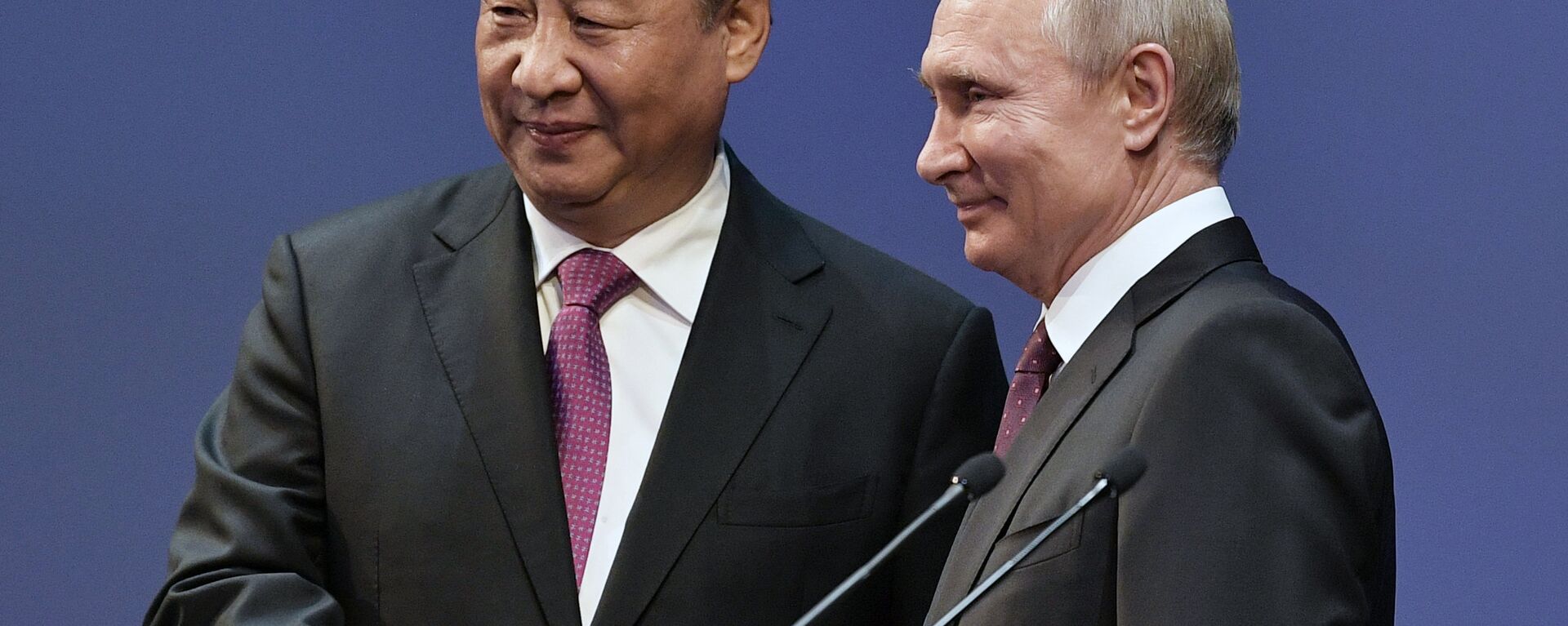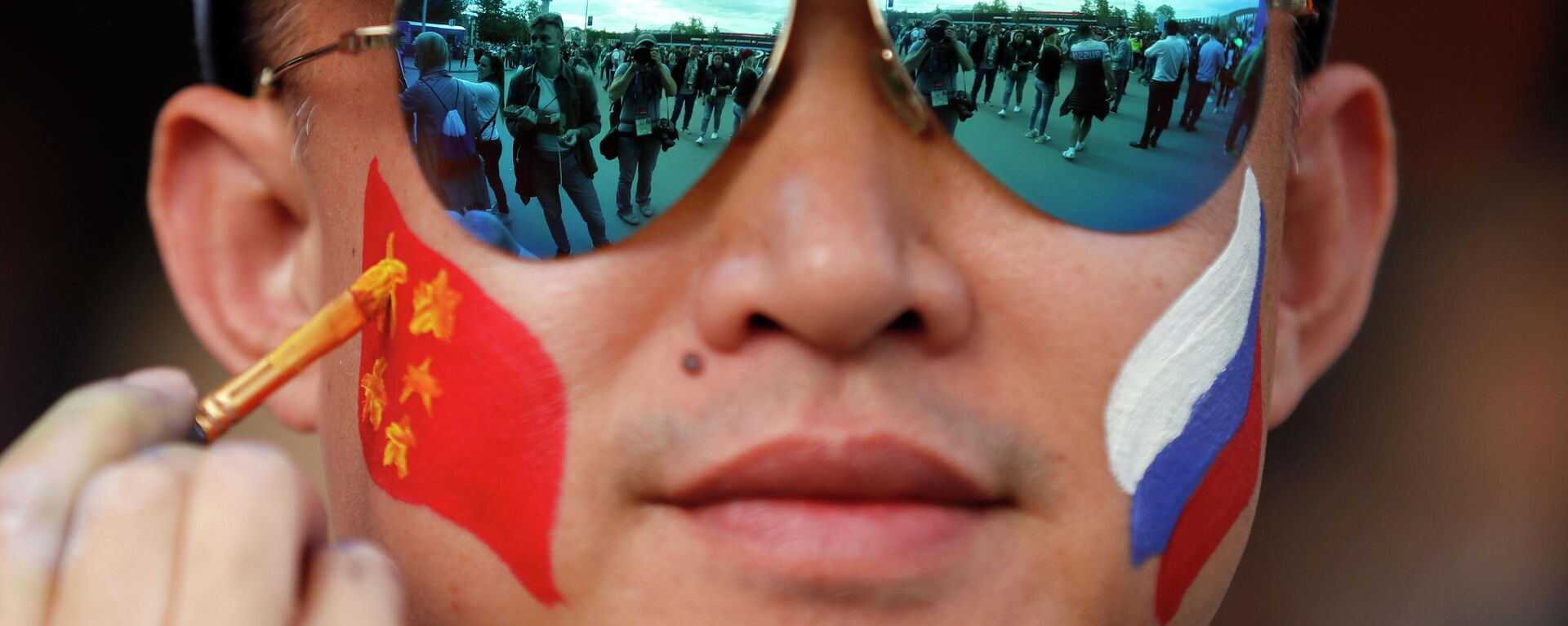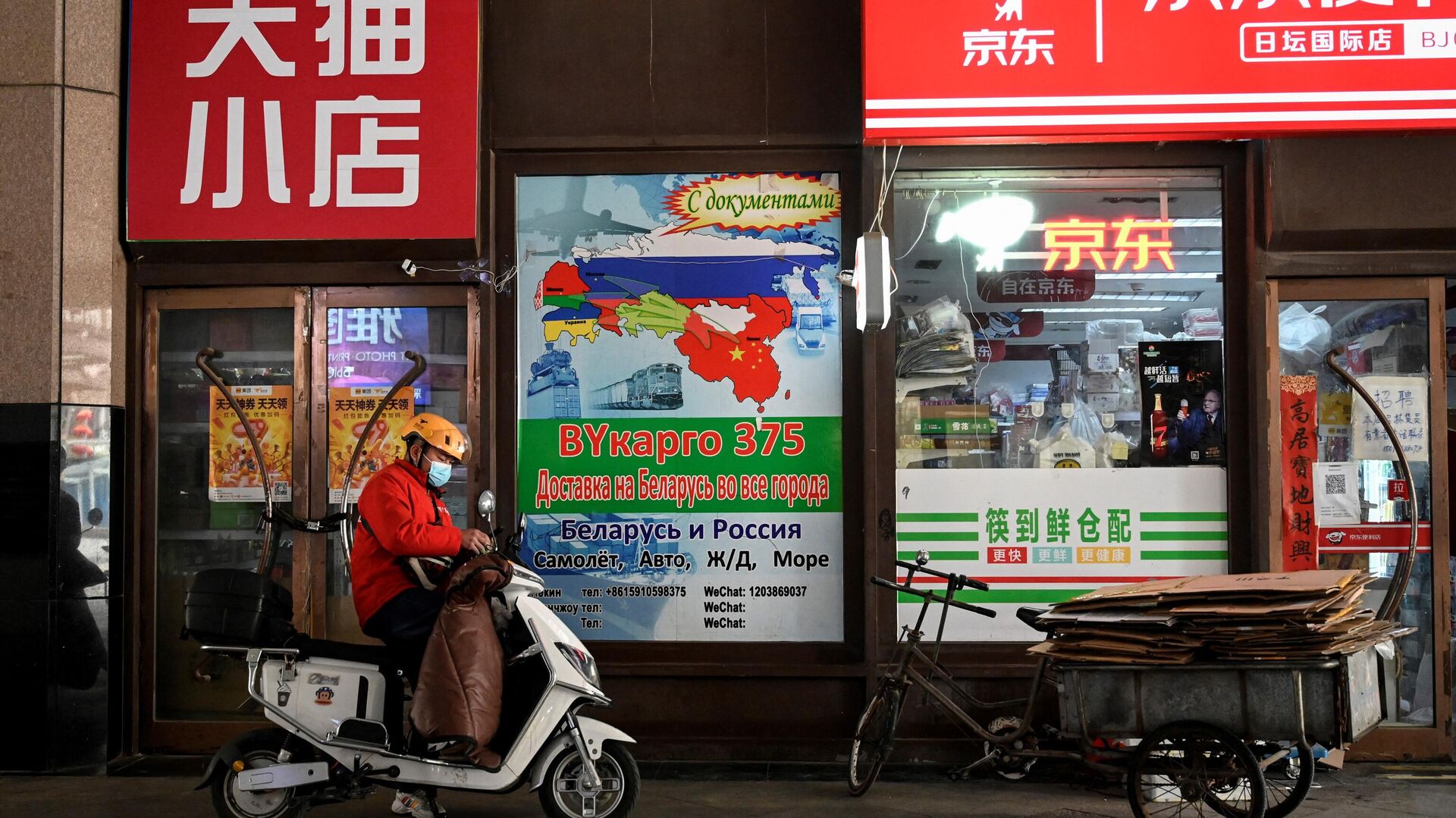https://sputnikglobe.com/20230113/russia-china-enjoy-record-29-bump-in-trade-signaling-failure-of-western-sanctions-1106296999.html
Russia, China Enjoy Record 29% Bump in Trade, Signaling Failure of Western Sanctions
Russia, China Enjoy Record 29% Bump in Trade, Signaling Failure of Western Sanctions
Sputnik International
Russia and China ramped up diplomatic and economic cooperation on a number of fronts in 2022.
2023-01-13T19:08+0000
2023-01-13T19:08+0000
2023-01-13T19:24+0000
economy
russia
china
trade
economic cooperation
economic ties
imports
exports
sanctions
https://cdn1.img.sputnikglobe.com/img/07e7/01/0d/1106298106_0:161:3071:1888_1920x0_80_0_0_fd0f34e4d22fb0da1394e03ee0ed9c63.jpg
Trade between Russia and China jumped by a whopping 29.3 percent in 2022, breaking records and hitting a total value of over $190.27 billion dollars, according to new data put out by China’s Customs Administration on Friday.According to the figures, Russia imported some $114.149 billion in goods and services from China over the year, with China importing $76.122 billion from Russia in return. Russia's total imports from China increased by some 43.4 percent in 2022, while China’s jumped upward by 12.8 percent.Russia was also the global leader of in terms of total trade growth between the People’s Republic and another country, accounting for roughly 3 percent of the Asian economic superpower’s total trade.The figures inched the two countries closer to the goal set out by Presidents Putin and Xi of $250 billion in annual trade by 2024.Russia-China trade has increased dramatically over the past two decades, from less than $10 billion in the year 2000, to $190+ billion now. Trade has concentrated heavily on the Asian industrial giant's purchases of Russian raw materials, including oil, gas, timber and food, and the export of finished manufactured goods and electronics to its northern neighbor.The continued strengthening of Russia-China trade ties has both “external” and “internal” factors, says Ma Youjun, a senior researcher specializing in China-Russia relations at the Heilongjiang Province Academy of Social Sciences.The "external" factors are centered around the Ukrainian crisis, which “erupted in early 2022” and caused “immense chaos across the entire global geopolitical environment,” Ma said in an interview with Sputnik. The US and its allies slapped nearly a dozen rounds of sanctions on Russia, and in so doing, “pushing up the price of key commodities and consumer goods.”The sanctions war, and an increasingly “complicated” geopolitical situation around Russia, led to the shoring up of Sino-Russia ties, “especially economic ones,” according to Ma. “The external environment may very well have pushed China and Russia to strive for [further] convergence in trade and economic cooperation," he said.In addition to the external factors, Ma cited “internal” ones, including the long, gradual improvement in Russia-China trade and economic ties over the past three decades, flowering into the current “comprehensive partnership.”“Especially in the face of geopolitical tensions, energy price volatility, volatility in prices for basic commodities and consumer goods, Russia needs a stable buyer in the East, and China needs Russia as a reliable partner,” the specialist stressed.Consequently, the two countries have continued to expand traditional areas of cooperation, especially in energy, agriculture and mineral wealth. At the same time, Ma noted, Moscow and Beijing have expanded ties in science and technology, and the humanitarian field as well.“We can say that today’s cooperation is the inevitable continuation of history and continuous development of trade and economic cooperation between the two nations,” the scholar said.Ma also cited a third factor accounting for the continued upward climb in Sino-Russian trade ties - regional cooperation, through programs to develop China’s northeast regions and the Russian Far East, including via China’s ambitious One Belt One road initiative, cooperation with the Eurasian Economic Union, and areas of mutual interest in agriculture, cross-border industrial cooperation, natural resources, etc. “All these areas...have become an important pillar for interregional cooperation in a comprehensive partnership and strategic interaction between the two countries,” the researcher concluded.
https://sputnikglobe.com/20221230/putin-says-russia-china-trade-will-grow-by-25-by-end-of-2022-despite-intimidation-by-west-1105918412.html
https://sputnikglobe.com/20230101/chinese-media-says-washington-in-no-position-to-lecture-beijing-how-to-deal-with-moscow-1105971936.html
https://sputnikglobe.com/20221201/russia-china-and-iran-represent-new-triangular-in-multilateral-diplomacy-envoy-says-1104917867.html
russia
china
Sputnik International
feedback@sputniknews.com
+74956456601
MIA „Rossiya Segodnya“
2023
News
en_EN
Sputnik International
feedback@sputniknews.com
+74956456601
MIA „Rossiya Segodnya“
Sputnik International
feedback@sputniknews.com
+74956456601
MIA „Rossiya Segodnya“
russia, china, trade, turnover, imports, exports
russia, china, trade, turnover, imports, exports
Russia, China Enjoy Record 29% Bump in Trade, Signaling Failure of Western Sanctions
19:08 GMT 13.01.2023 (Updated: 19:24 GMT 13.01.2023) Russia and China ramped up diplomatic and economic cooperation on a number of fronts in 2022. Earlier this month, in a New Year’s telegram to President Vladimir Putin, Chinese President Xi Jinping expressed Beijing's readiness to continue to deepen “comprehensive strategic cooperation and practical collaboration” with Moscow.
Trade between Russia and China jumped by a whopping
29.3 percent in 2022, breaking records and hitting a total value of over $190.27 billion dollars, according to new data put out by China’s Customs Administration on Friday.
According to the figures, Russia imported some $114.149 billion in goods and services from China over the year, with China importing $76.122 billion from Russia in return. Russia's total imports from China increased by some 43.4 percent in 2022, while China’s jumped upward by 12.8 percent.
Russia was also the global leader of in terms of total trade growth between the People’s Republic and another country, accounting for roughly 3 percent of the Asian economic superpower’s total trade.
The figures inched the two countries closer to the goal set out by Presidents Putin and Xi of $250 billion in annual trade by 2024.
Russia-China trade has increased dramatically over the past two decades, from less than $10 billion in the year 2000, to $190+ billion now. Trade has concentrated heavily on the Asian industrial giant's purchases of Russian raw materials, including oil, gas, timber and food, and the export of finished manufactured goods and electronics to its northern neighbor.

30 December 2022, 10:01 GMT
The continued strengthening of Russia-China trade ties has both “external” and “internal” factors, says Ma Youjun, a senior researcher specializing in China-Russia relations at the Heilongjiang Province Academy of Social Sciences.
The "external" factors are centered around the Ukrainian crisis, which “erupted in early 2022” and caused “immense chaos across the entire global geopolitical environment,” Ma said in an interview with Sputnik. The US and its allies slapped
nearly a dozen rounds of sanctions on Russia, and in so doing, “pushing up the price of key commodities and consumer goods.”
The sanctions war, and an increasingly “complicated” geopolitical situation around Russia, led to the shoring up of Sino-Russia ties, “especially economic ones,” according to Ma. “The external environment may very well have pushed China and Russia to strive for [further] convergence in trade and economic cooperation," he said.
In addition to the external factors, Ma cited “internal” ones, including the long, gradual improvement in Russia-China trade and economic ties over the past three decades, flowering into the current “comprehensive partnership.”

1 January 2023, 09:14 GMT
“Especially in the face of geopolitical tensions, energy price volatility, volatility in prices for basic commodities and consumer goods, Russia needs a stable buyer in the East, and China needs Russia as a reliable partner,” the specialist stressed.
Consequently, the two countries have continued to expand traditional areas of cooperation, especially in energy, agriculture and mineral wealth. At the same time, Ma noted, Moscow and Beijing have expanded ties in science and technology, and the humanitarian field as well.
“We can say that today’s cooperation is the inevitable continuation of history and continuous development of trade and economic cooperation between the two nations,” the scholar said.
Ma also cited a third factor accounting for the continued upward climb in Sino-Russian trade ties - regional cooperation, through programs to develop China’s northeast regions and the Russian Far East, including via China’s ambitious One Belt One road initiative, cooperation with the Eurasian Economic Union, and areas of mutual interest in agriculture, cross-border industrial cooperation, natural resources, etc. “All these areas...have become an important pillar for interregional cooperation in a comprehensive partnership and strategic interaction between the two countries,” the researcher concluded.

1 December 2022, 05:01 GMT





